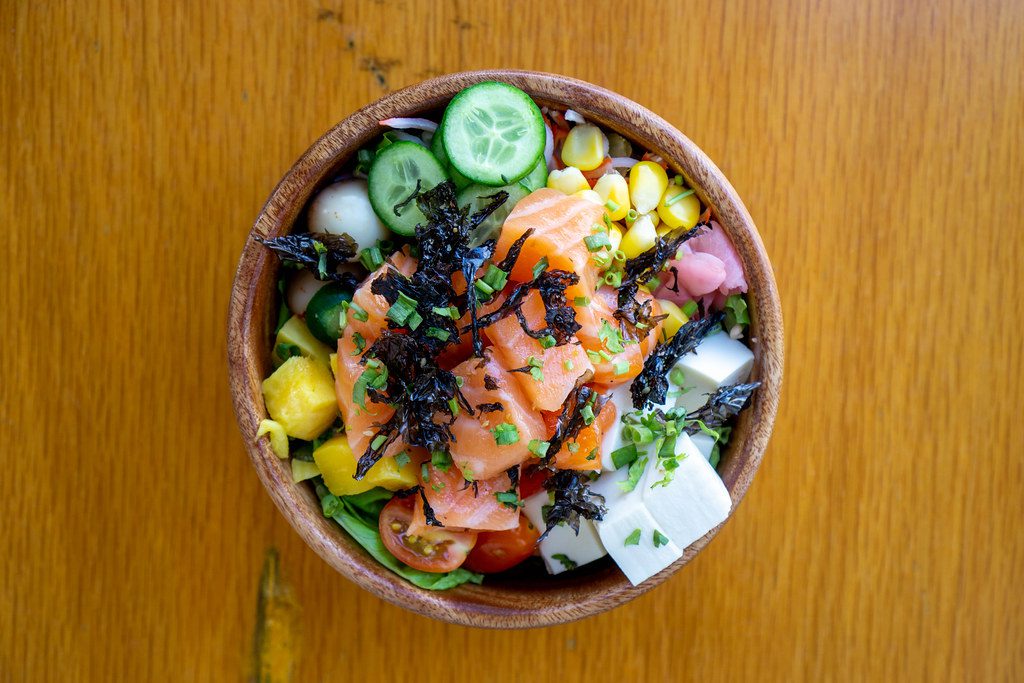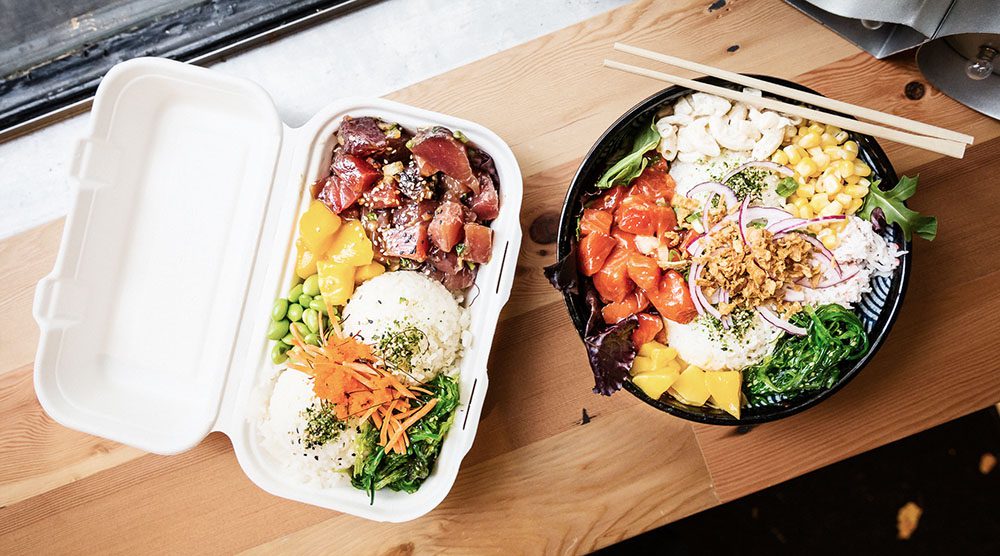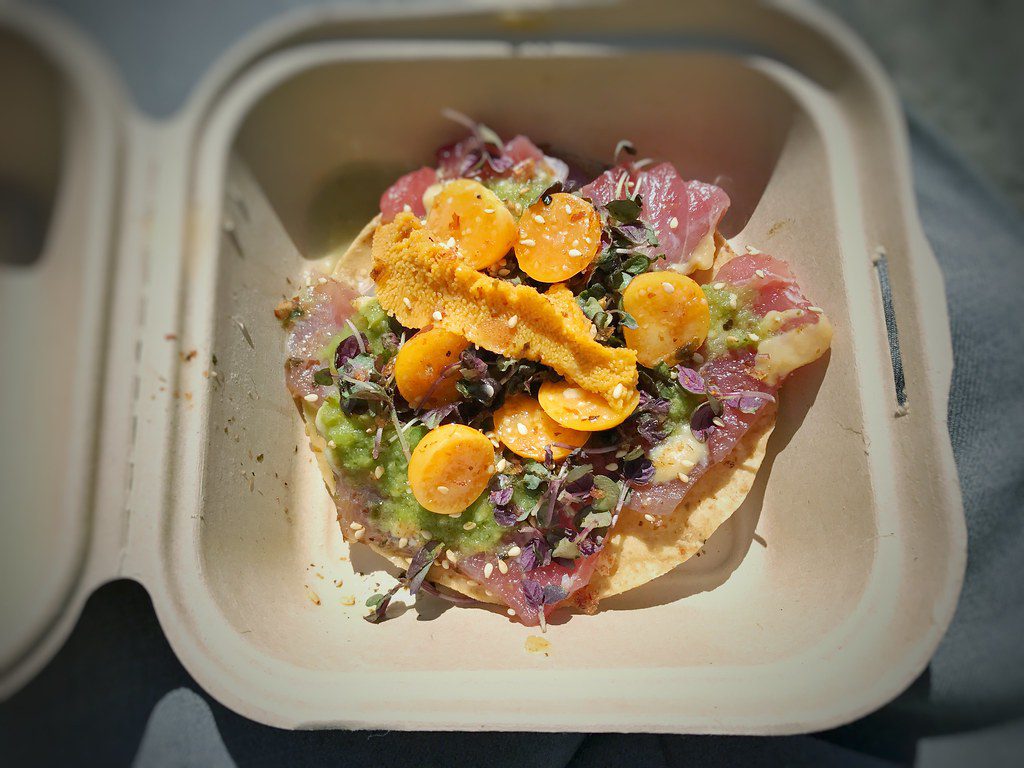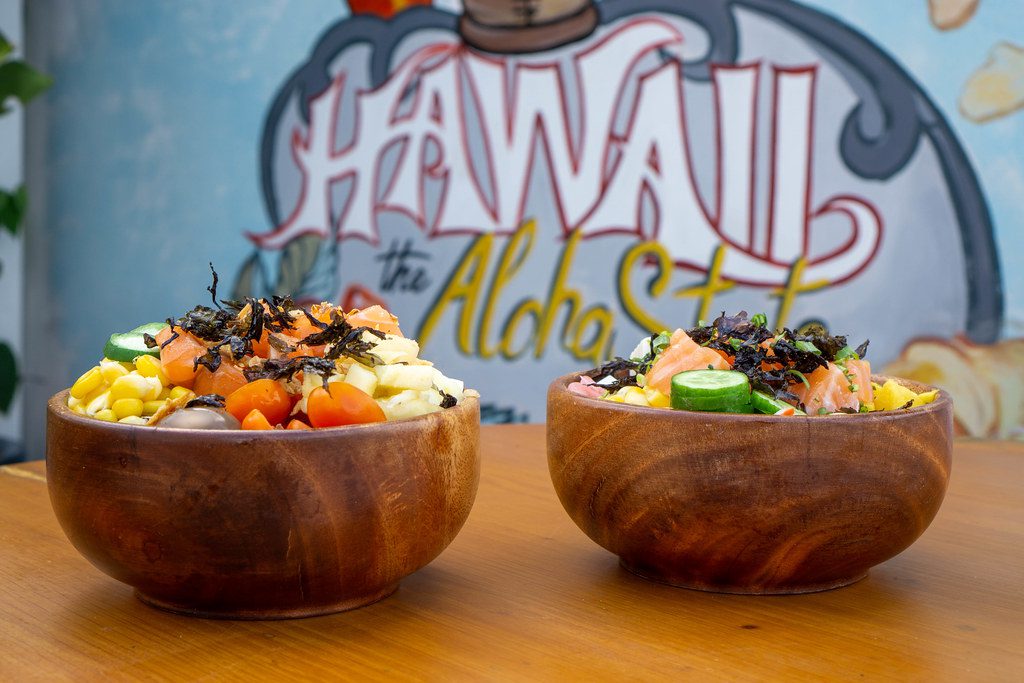Poke’s evolution has been fairly straightforward: Changes mirror the tastes of new arrivals. When ships from the West Coast dropped anchor in local ports, sailors traded salmon for salt. Waves of immigrants from China and Japan introduced soy sauce and sesame oil. Just as each group has added its dishes to Hawaii’s culinary melting pot, selections of poke have multiplied. Visit any poke counter today and you’ll find not just ahi limu (seaweed) and spicy ahi poke, but kimchee shrimp, furikake salmon, miso tako (octopus), pipikaula (dried beef) and even bacalao poke made with Portuguese dried salt cod.

That’s all at supermarkets and poke shops. What about at restaurants, where poke appears on plate lunches, prix fixe tasting menus and everything in between? Here’s a glimpse of poke in its myriad forms today.
Poke Bowls

First, poke in Hawaii is marinated in its dressings, even if for only 15 minutes, to allow the fresh seafood to absorb the flavors. And second, here’s a list of what you’ll never find in a local-style poke bowl: quinoa, chicken, zucchini noodles, cauliflower, corn, kale, bamboo shoots, mango, orange slices, almonds.
Ahi Poke Musubi
The iconic dish at Hoku’s restaurant in Kahala combines two favorite Island foods—poke and rice balls—and deep-fries the whole thing. The ahi poke is stuffed inside a ball of lightly seasoned sushi rice that’s coated in salty, briny furikake before it’s fried. Hot and crispy outside, tender and fresh inside, it’s served with a lightly pickled crab-cucumber salad.
Poke Tacos

Pristine cubes of translucent ruby ahi: That’s what you’ll find tucked inside fresh, crunchy wonton shells at places like Moku Kitchen and Monkeypod Kitchen. As with all good tacos, sprightly garnishes amp up the freshness and round out texture and flavor. This is a rare poke version that you can eat with your hands. You’ll want a frosty glass of your favorite local craft beer to quaff with this.
According to www.hawaiianairlines.com. Source of photos: internet








